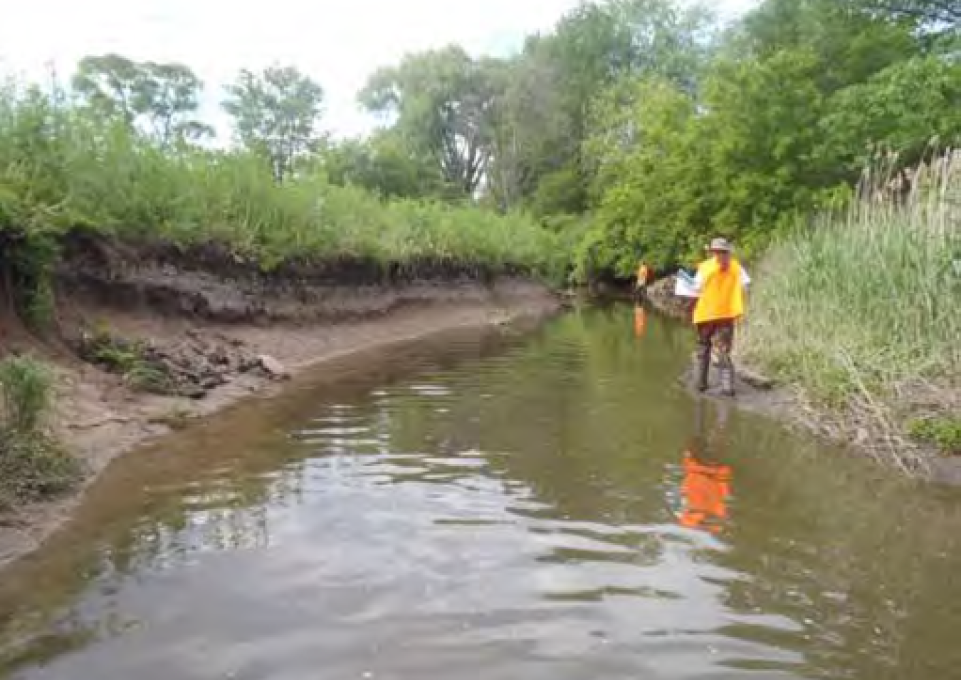
Does more shade limit the presence of invasive plants along streams and rivers? That intriguing possibility was suggested in “Habitat limitations on invasive communities in urban riparian areas,” which was posted online by Invasive Plant Science and Management. The authors are Robert J. Warren II, assistant professor of biology; Daniel L. Potts, associate professor of biology, and Kelly Frothingham, chair and professor of geography and planning.
The study included 348 sites along 12 streams in the Upper Niagara River watershed. Stream condition data was collected during the summer 2013 season using the Natural Resources Conservation Service (NRCS) Stream Visual Assessment Protocol (SVAP). Three-member field crews collected data including the presence of six common invasive plant species found in riparian zones near urban streams in the Eastern Great Lakes region. Of the six species, four were found to be widespread: Alliaria petiolate, known as garlic mustard; Lythrum salicaria, known as purple loosestrife; Phalaris arundinacea, known as reed canarygrass; and Phragmites australis, known as Phragmite.
“The stream assessment protocol isn’t usually used to study invasive plant species,” said Warren. “It was fascinating to see how well it worked.” The protocol includes evaluating such observable characteristics as the extent of the riparian zone, stability of the bank, appearance of the water, barriers to fish movement, and canopy cover, which evaluates the amount of shade in the site.
Frothingham, an expert in stream restoration who trained the field crew in use of the SVAP technique, said “It’s important to restore riparian areas because it improves water quality in many ways.”
A healthy riparian community is also a rich source of species biodiversity and ecosystem services. Invasive plants “alter the ecological and ecosystem functioning of native assemblages in riparian areas,” the study notes. For invasive plants to succeed, they must first be available to establish themselves, and the habitat must be suitable.
The researchers found limited support for their prediction that plant propagation affected the distribution of invasives. However, there was a strong negative correlation between riparian canopy cover and the presence of invasive species.
“We don’t suggest that planting trees will eradicate invasive species,” said Warren. “But the presence of trees may at least reduce their abundance and richness.”
